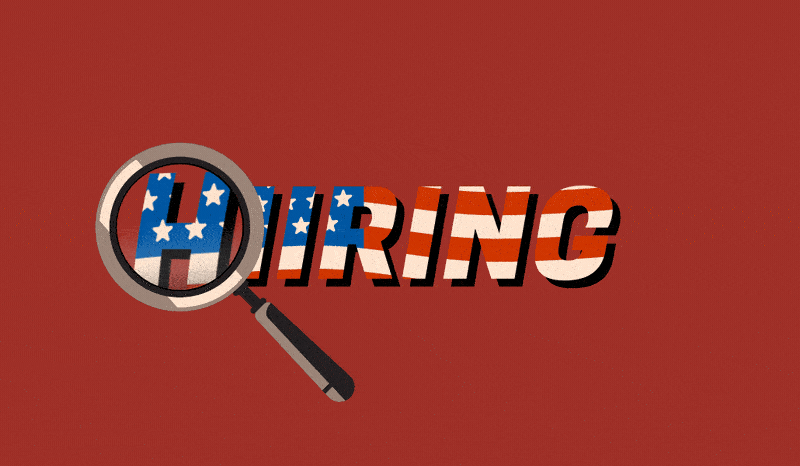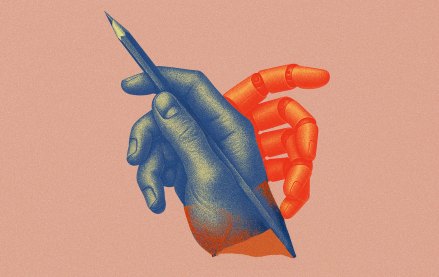AI screenings, budget cuts, and burnout: What’s really behind advertising’s hiring disconnect

As a Digiday+ member, you were able to access this article early through the Digiday+ Story Preview email. See other exclusives or manage your account.This article was provided as an exclusive preview for Digiday+ members, who were able to access it early. Check out the other features included with Digiday+ to help you stay ahead
The job market has never been easy to navigate. But right now — between tightened marketing budgets, agency consolidation and economic headwinds — it’s as convoluted as ever.
Job seekers say they’re seeing hundreds of roles for brands and agencies describing wanting a unicorn of talent that can do everything from social media content creation to event marketing management. Hiring processes seem impersonal, powered by AI-powered screening tools. Sometimes, after passing some of these hurdles, candidates say they end up being strung along for weeks or ghosted.
But recruiters say agencies and brands are inundated with applicants. There are too many people in need of work and not enough jobs. Brands and agencies are tasked to do more with less, navigating shrinking client budgets that make it harder to account for overheard costs.
The industry seems to be embracing a new disconnect between job seekers and employers. It’s neither a talent market nor employer market, according to Mandana Mellano, founder and executive recruiter at Peony Talent, the boutique talent recruitment and advisory practice that has worked with hold cos like WPP and IPG as well as independent agencies like Zambezi, The Variable, and TILT.
“It almost seems like a fear-based market, which is unfortunate,” she said. Candidates are desperately trying to land their next gig while employers are unsure of how to hire in a flooded talent market, she added.
The U.S. Bureau of Labor Statistics reported the unemployment rate remained unchanged at 4.2% last month. But employment in advertising, public relations and related services is in a slump. Last May, the Bureau reported 497,4000 working in those fields, based on seasonally adjusted figures. This May, that figure dropped to 488,600.
Talent frustrations
The drop may seem incremental, but is perhaps indicative of broader shifts in the industry, like the ever-present pressure to do more with less — or an adoption of AI tools in service of “efficiency.” The push to cut costs has meant fewer full-time hires, more reliance on AI screening tools in the hiring process and hiring freelancers or junior talent willing to work for less.
“It’s a lot of hesitancy of committing, particularly at senior levels,” said Barbie Koelker, a B2B tech marketing leader, who has been on the job hunt for more than six months. “There’s hesitancy to commit to marketing.”
At this point, Koelker estimates she has sent over more than 1,000 applications and finds herself grappling with AI screening tools in what she calls the “keyword race.” She added the application process with AI agents can be dehumanizing, preventing talent from getting in front of hiring managers if keywords in a resume don’t exactly match those found in the job description.
For Tash Guimond, a California-based creative marketer, it’s led to burnout after applying to jobs, especially where everyone’s asking for a so-called unicorn, or marketer who can do it all, Guimond added.
“If I’m really overqualified, they’re like, ‘Your background is so impressive, but we went forward with somebody else who had more experience in this specific category’,” Guimond said.
Person-to-person interviews aren’t always guaranteed to be better, said Jennifer B., a digital marketer with over 10 years of experience and looking for full time work. (Jennifer spoke on the condition that her full last name remain anonymous.) There have been instances, she said, where interviewers didn’t honor scheduled meeting times.
Employer’s lament
Even recruiters admit there’s a gap. There’s more talent looking for jobs, especially full-time, senior roles, than there are jobs available, per recruitment agencies. The new business model is partly to blame. Holding companies are buying up smaller players to beef up their offerings and better compete for ad dollars. When mergers and acquisitions happen, layoffs follow shortly after.
“They’ve had massive layoffs which means that there’s a lot more talent on the market now and it’s becoming more competitive with hiring,” said Tasheyia Thomas-Gardon, co-founder of NuWave Talent.
Then there’s the economic uncertainty. Ad spend has held steady, but it’s taking longer to get deals signed, guaranteeing dollars continue to flow. The industry keeps shrinking, leaving brands and agencies grappling with the changes.
Increasingly, brands and agencies are hiring more product marketers, project management, business development experts — and on a freelance basis to account for fluctuating budgets, Thomas-Gardon said. It means fewer full time roles and fewer creative gigs, she said.
“I have so many art directors that are reaching out to me, but I’m barely getting any requests for art and copywriting,” she said.
The current job market is one full of paradoxes: overflowing with talent, yet short on opportunities, and data driven whilst lacking human connections. For the three job seekers Digiday spoke with for this piece, it’s about more than a paycheck. It’s about finding job alignment in an everchanging industry.
Jennifer B. said: “While I do need to find full-time employment, I am also interviewing these companies as well and want to find one where I will be a good fit and be treated with respect.”
More in Marketing

How the MAHA movement influenced food and beverage brands in 2025
The MAHA movement has come to stand for different things in different people’s eyes, depending on which initiatives they most closely follow.

Why Georgia-Pacific is turning its programmatic scrutinty to the sell side
The company is turning its attention to the sell side, zeroing in on the ad tech firms that move inventory for publishers — the supply-side platforms.

Future of Marketing Briefing: Why ‘just good enough’ is generative AI’s real threat to marketers
When characters and mascots are allowed to live inside generative systems, they stop being event-based and start becoming environmental.








